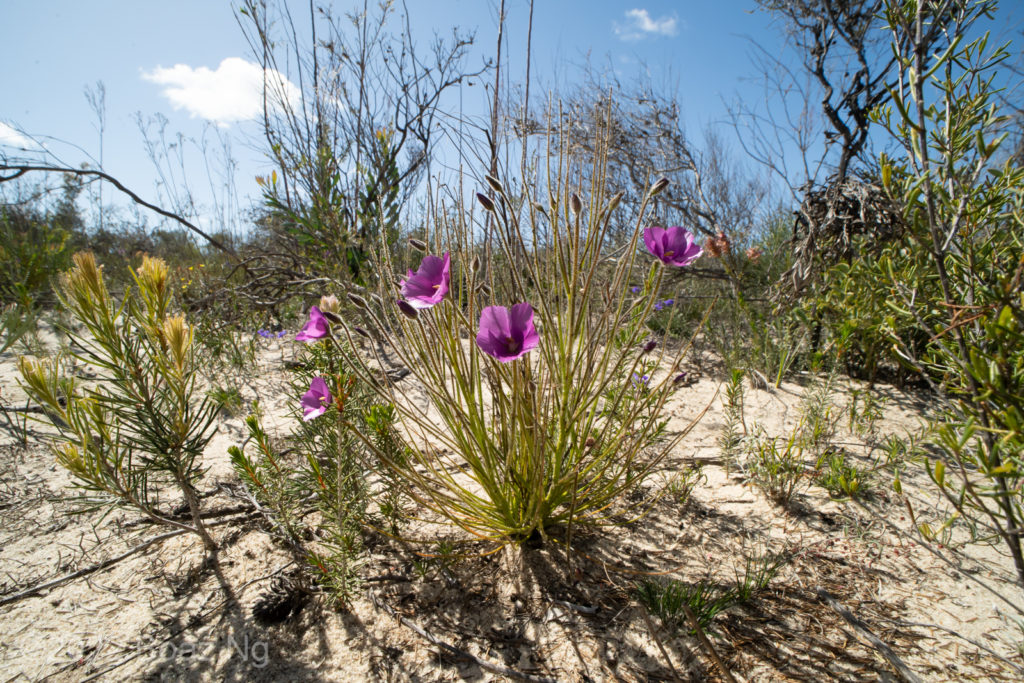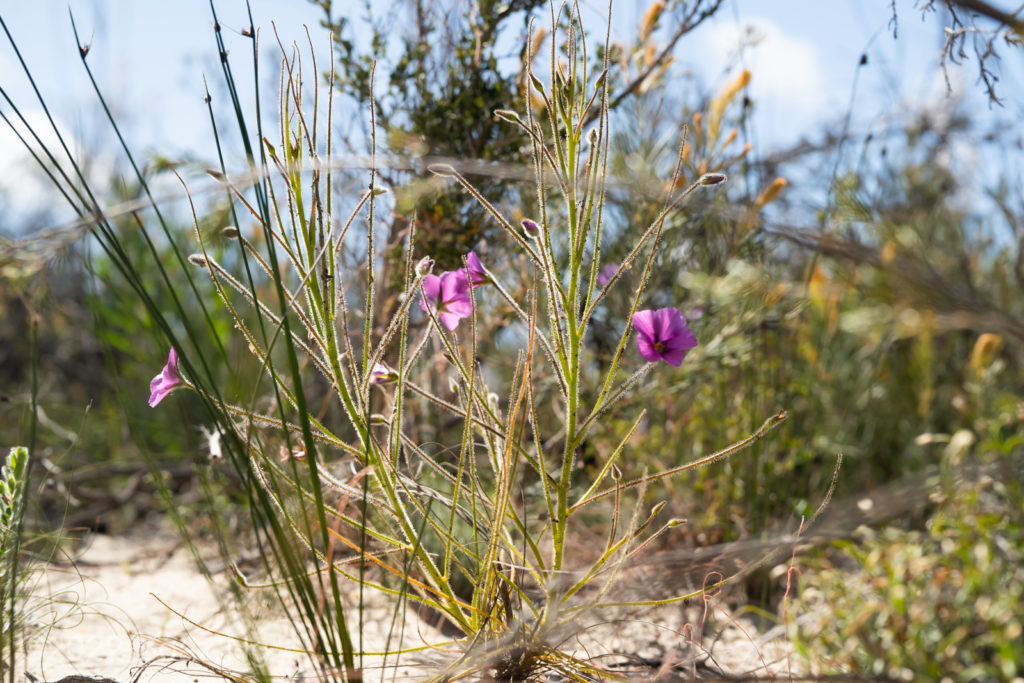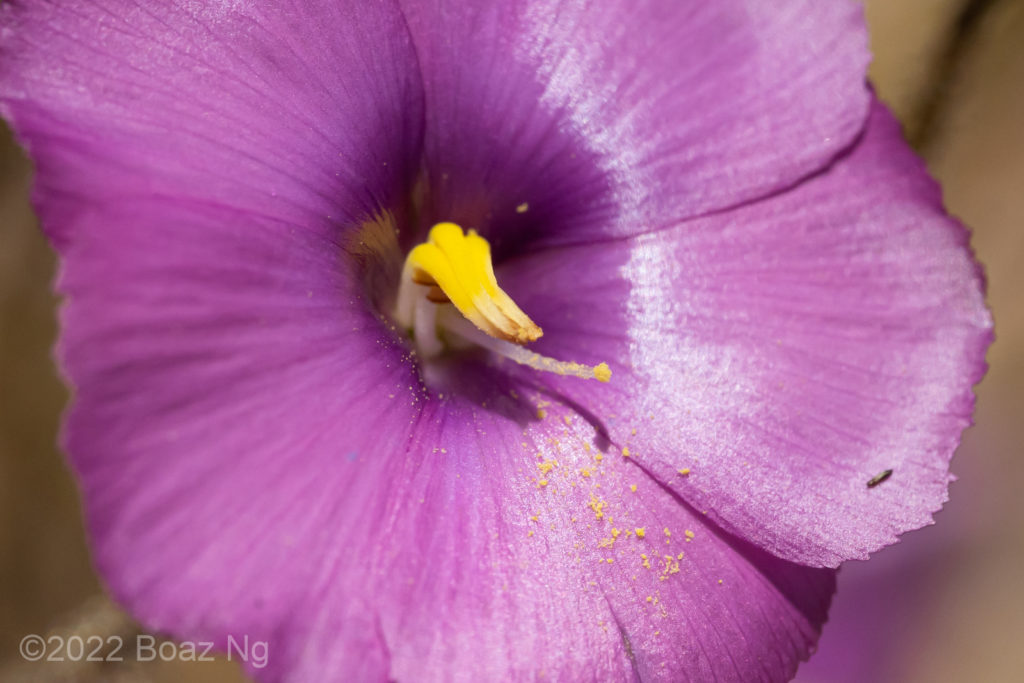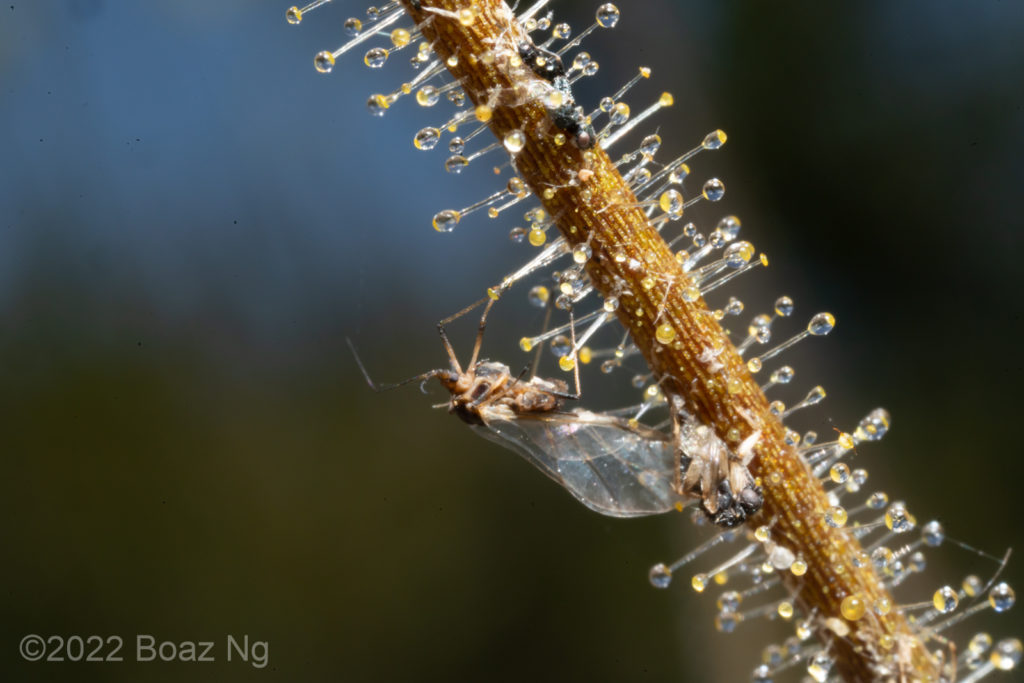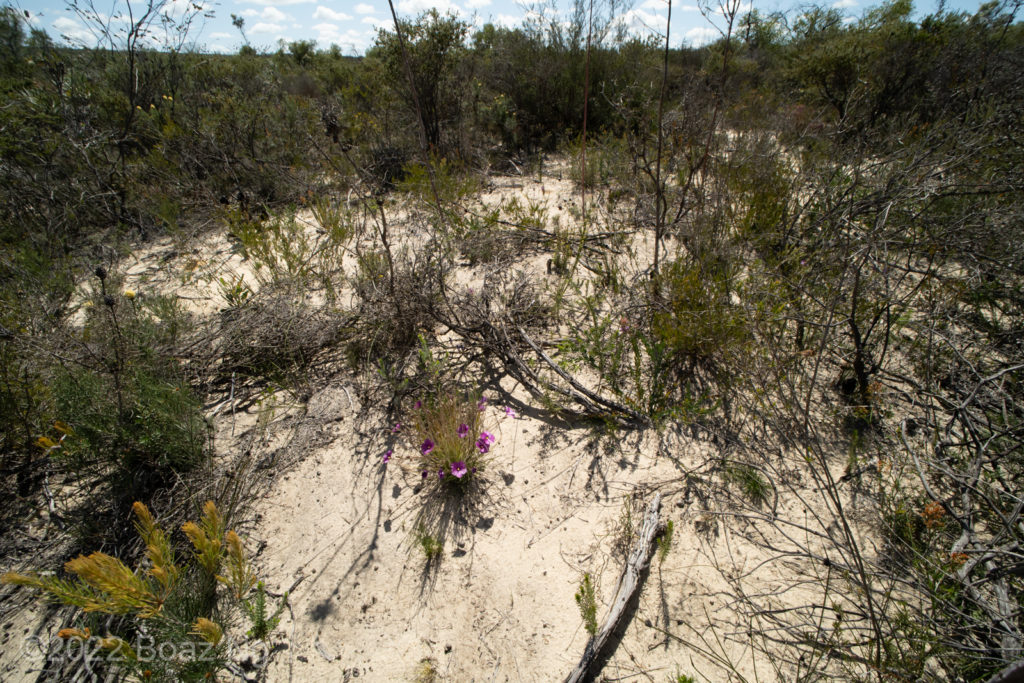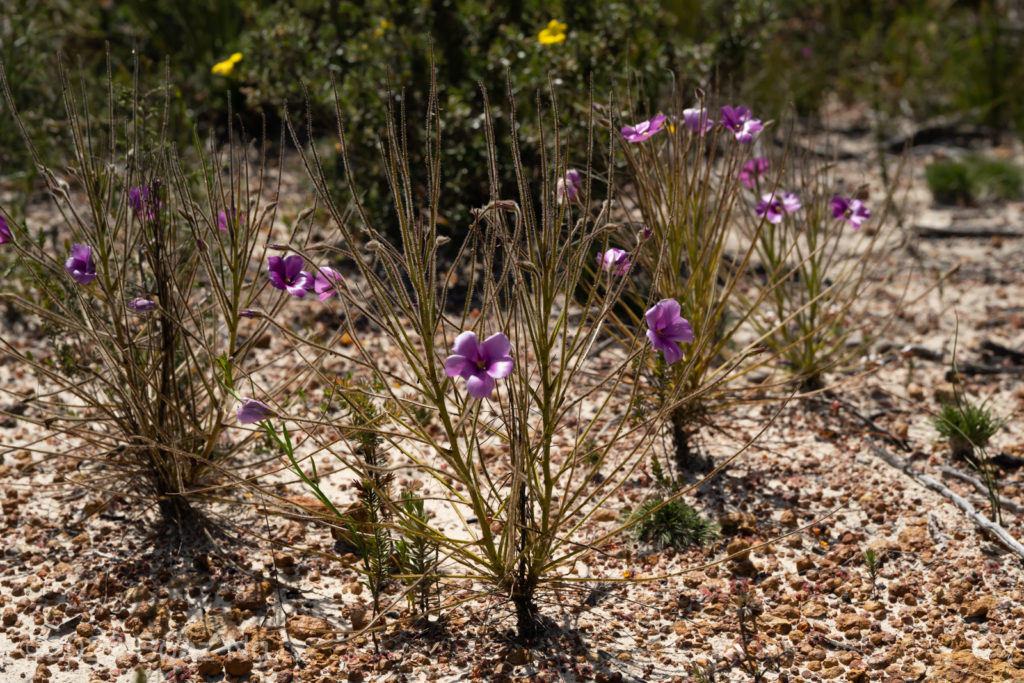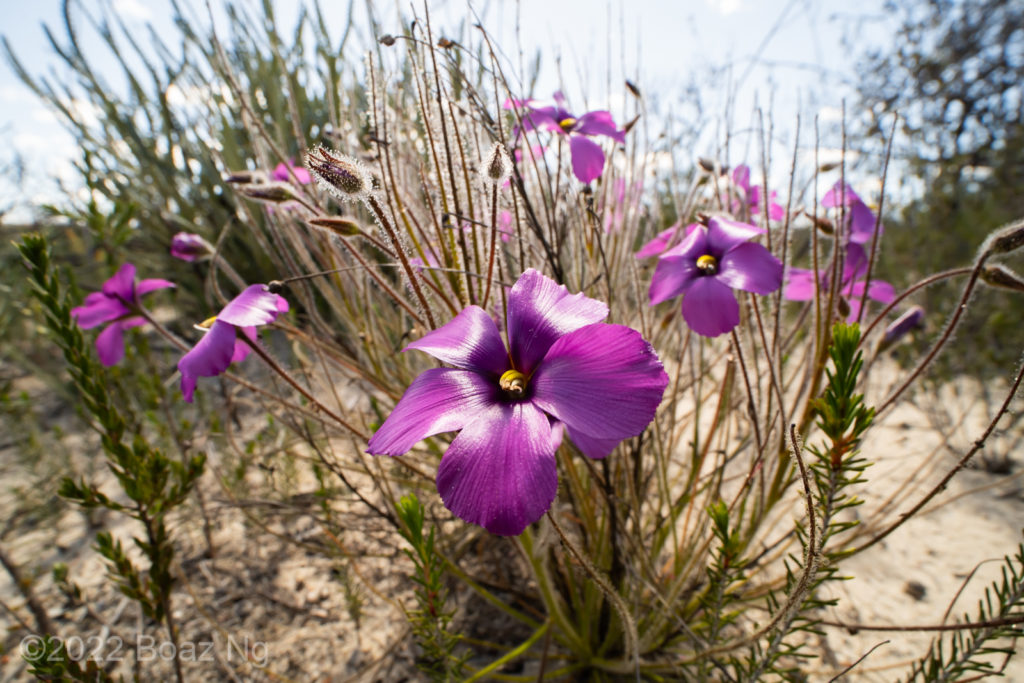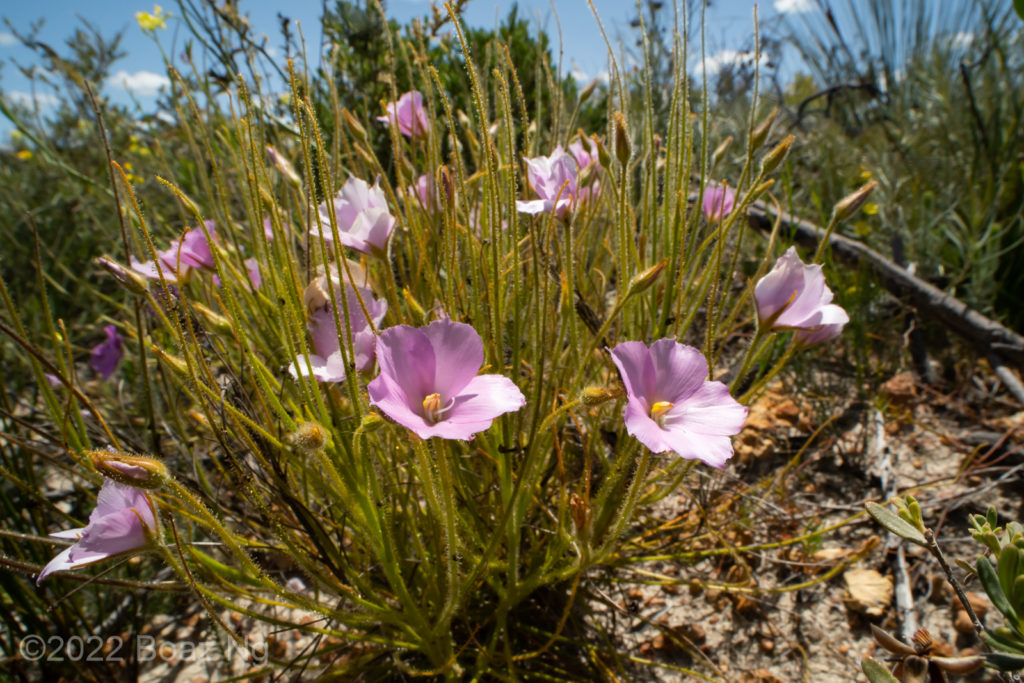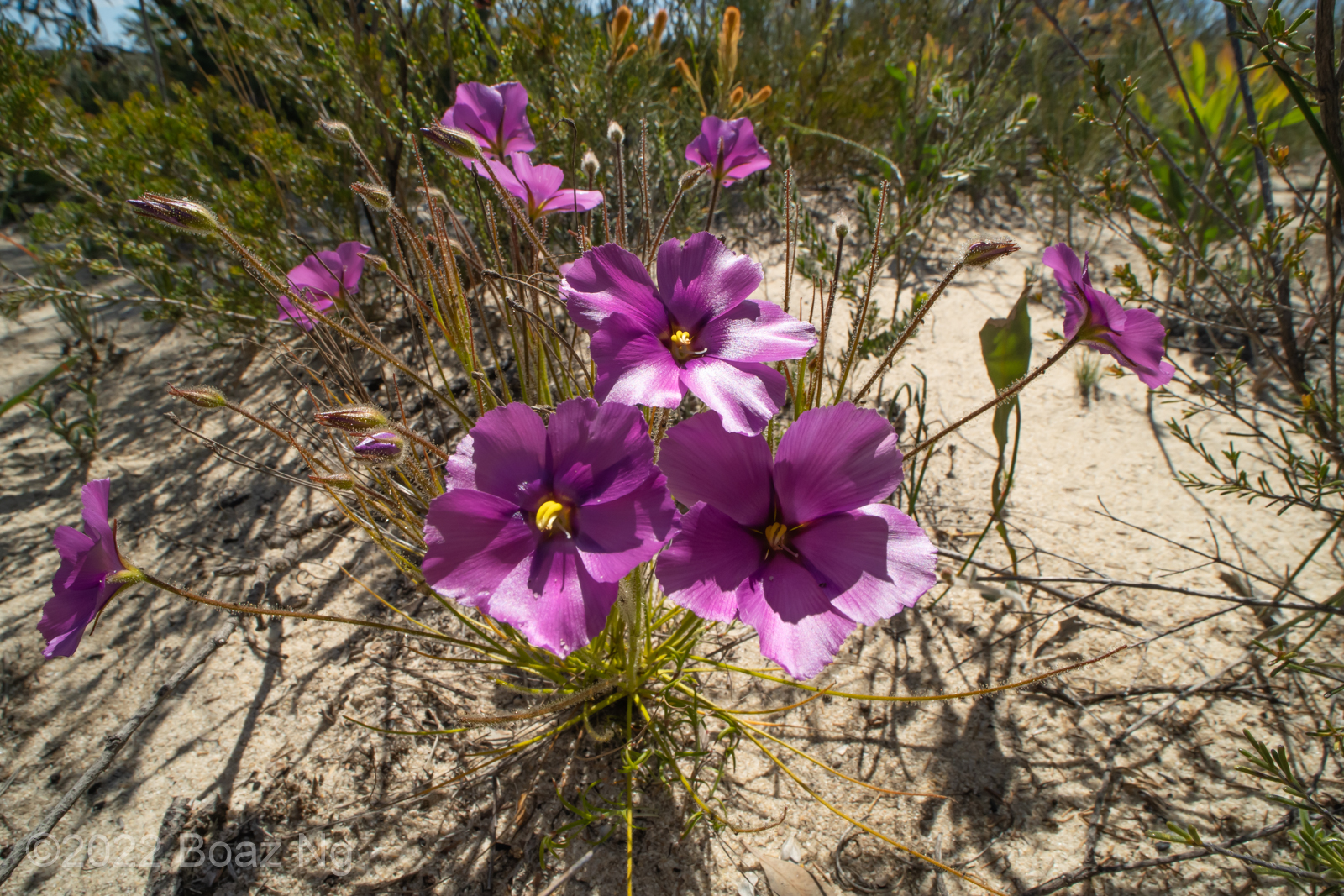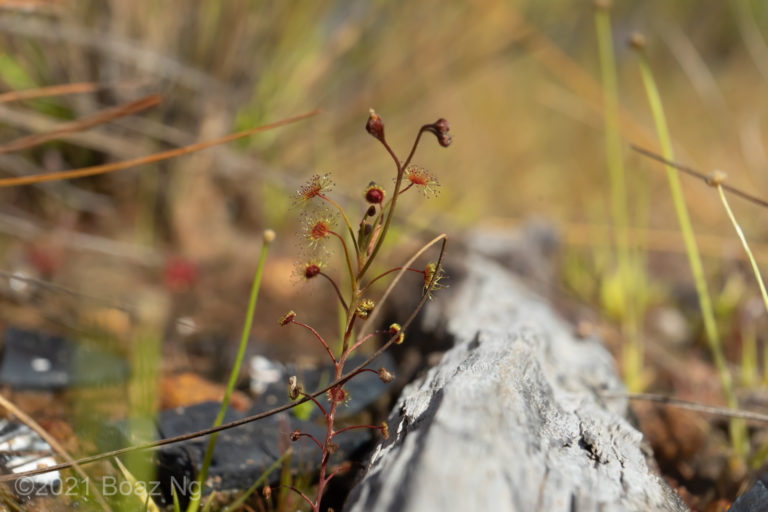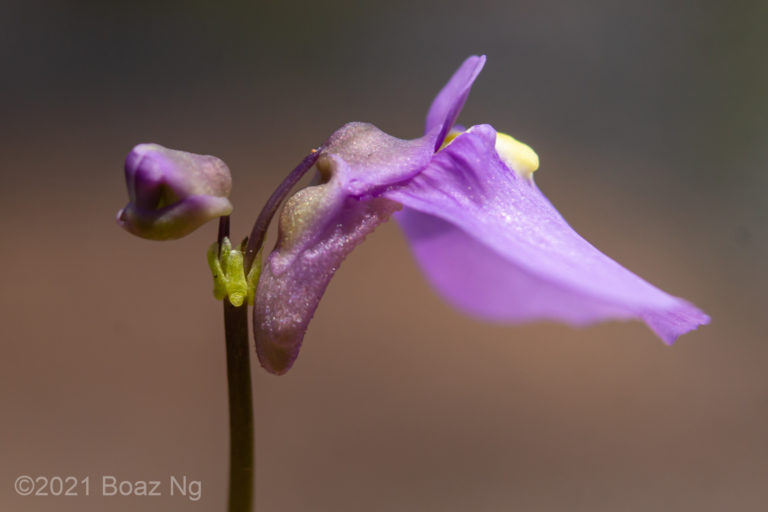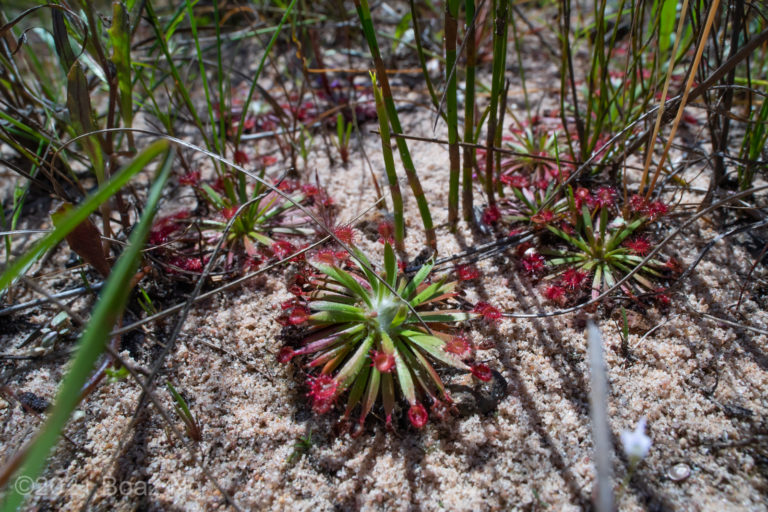Byblis lamellata is a perennial rainbow plant endemic to the sandplains north of Perth. The species is named after the lamellate protrusions on the surface of its seeds.
Byblis lamellata is a large plant growing 30 – 60 cm in height. The plant has a strong propensity to branch out from the main stem, forming a bushy morphology. The leaves are linear. Large purple flowers about 3 cm in diameter. The stamens are yellow, clustered together and twisted to one side. The anthers of the stamens are longer than the filaments. The pedicels are similar in morphology to the leaves. All surfaces of the plant except the flowers (but including the sepals) are covered in mucilage-producing glands of varying lengths. Minute glands are produced on the surfaces of the leaves. In larger populations, there is wide variation in the width of the petals and a few plants with pink flowers.
The species grows in well-drained, deep and powdery sand in the coastal plain between Perth to just north of Eneabba. Its habitat ranges from flat plains to sloped topographies towards the upper slopes of gentle laterite hills but it is inconsistently present in superficially similar environments. The plants grow amongst biodiverse low heathlands.
The species seems to require fire as part of its ecology. In a site where one side of the firebreak had been burned a year or two prior in a fire management program, the plants were common amongst the sparse and recovering bushland. No plants were observed on the unburnt side of the track where the bushland was much denser. It’s likely that the species germinates after fire, maturing and setting seed into the environment before being outcompeted by the recovered heathland. In unburnt environments, the species is generally only observed on fire trails which may simulate the open niche of a fire-cleared environment.
Byblis lamellata is most closely related to Byblis gigantea. Both species are perennial and share extremely similar morphology. The two species are supposed to be distinguishable by seed morphology however I have seen some inconsistencies so I will need to make further observations. Byblis lamellata is mainly distributed north of Cataby while Byblis gigantea mainly grows south of Cataby with some overlap. Byblis lamellata grows in deep, well-drained sand whereas B. gigantea grows on deep sand that is winter-wet and on the periphery of swamps.
